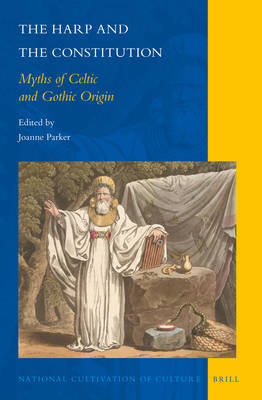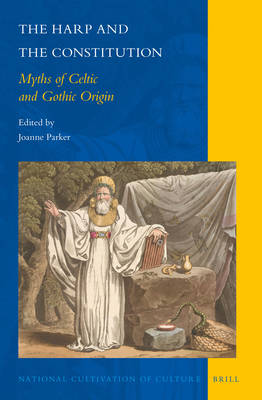
- Afhalen na 1 uur in een winkel met voorraad
- Gratis thuislevering in België vanaf € 30
- Ruim aanbod met 7 miljoen producten
- Afhalen na 1 uur in een winkel met voorraad
- Gratis thuislevering in België vanaf € 30
- Ruim aanbod met 7 miljoen producten
Zoeken
Omschrijving
'Celtic' and 'Gothic' both words refer today to both ancient tribes and modern styles. 'Celtic' is associated with harp music, native knitwear, and spirituality; 'Gothic' with medieval cathedrals, rock bands, and horror fiction. The eleven essays collected together here chart some of the curious and unexpected ways in which the Celts and the Goths were appropriated and reinvented in Britain and other European countries through the eighteenth, nineteenth, and twentieth centuries - becoming not just mythologised races, but lending their names to abstract principles and entire value systems.
Contributed by experts in literature, archaeology, history, and Celtic studies, the essays range from broad surveys to specific case-studies, and together demonstrate the complicated interplay that has always existed between 'Celticism' and 'Gothicism'.
Contributors are: John Collis, Robert DeMaria, Jr., Tom Duggett, Tim Fulford, Nick Groom, Amy Hale, Ronald Hutton, Joep Leerssen, Dafydd Moore, Joanne Parker, Juan Miguel Zarandona.
Contributed by experts in literature, archaeology, history, and Celtic studies, the essays range from broad surveys to specific case-studies, and together demonstrate the complicated interplay that has always existed between 'Celticism' and 'Gothicism'.
Contributors are: John Collis, Robert DeMaria, Jr., Tom Duggett, Tim Fulford, Nick Groom, Amy Hale, Ronald Hutton, Joep Leerssen, Dafydd Moore, Joanne Parker, Juan Miguel Zarandona.
Specificaties
Betrokkenen
- Auteur(s):
- Uitgeverij:
Inhoud
- Aantal bladzijden:
- 270
- Taal:
- Engels
- Reeks:
- Reeksnummer:
- nr. 11
Eigenschappen
- Productcode (EAN):
- 9789004306370
- Verschijningsdatum:
- 27/11/2015
- Uitvoering:
- Hardcover
- Formaat:
- Genaaid
- Afmetingen:
- 157 mm x 236 mm
- Gewicht:
- 521 g

Alleen bij Standaard Boekhandel
+ 222 punten op je klantenkaart van Standaard Boekhandel
Beoordelingen
We publiceren alleen reviews die voldoen aan de voorwaarden voor reviews. Bekijk onze voorwaarden voor reviews.











